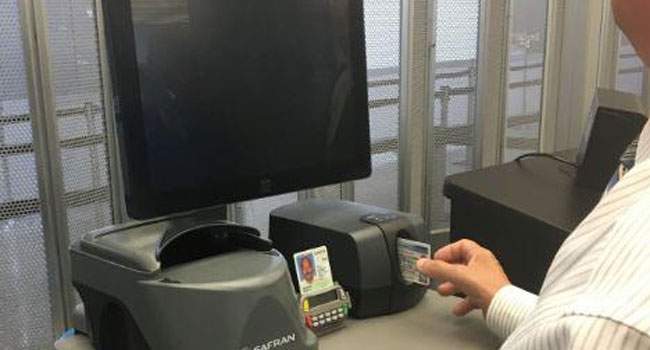
TSA at JFK and LaGuardia Airports are Using New Credential Authentication Technology to Improve Checkpoint Screening Capabilities
Transportation Security Administration officers at John F. Kennedy International and LaGuardia Airports are using new technology at checkpoints that validates a traveler’s identification and confirms their flight information in near real time.
TSA at JFK International Airport has 22 credential authentication technology (CAT) units in use and LaGuardia Airport has 18 of them in operation.
“The credential authentication technology units improve upon TSA’s capabilities to detect and identify fraudulent identification documents such as driver’s licenses and passports at checkpoints and increases efficiency by automatically verifying passenger identification,” said John Bambury, TSA’s Federal Security Director for JFK International Airport.
“In addition to enhancing detection capabilities for identifying fake IDs, the credential system is able to confirm a passenger’s flight status in near real time through a secured connection,” said Robert Duffy, TSA’s Federal Security Director for LaGuardia Airport.
CAT Screen with Passport
When a traveler hands the TSA officer their ID, the officer places it in the CAT unit, which scans the ID and informs the TSA officer whether the ID is valid. In some locations, the units are positioned to allow passengers to insert their ID into the units.
In most cases, travelers who approach the TSA travel document checking podium do not have to show their boarding pass because the CAT unit verifies that the traveler is prescreened to travel out of the airport for a flight that day; however, one may be requested for travelers under the age of 18 and/or those with ID issues. Even with TSA’s use of CAT, travelers still need to check-in with their airline in advance and bring their boarding pass to their gate agent to show the airline representative before boarding their flight.
CAT units authenticate several thousand types of IDs including passports, military common access cards, retired military ID cards, Department of Homeland Security Trusted Traveler ID cards, uniformed services ID cards, permanent resident cards, U.S. visas and driver licenses and photo IDs issued by state motor vehicle departments.
A CAT unit consists of the passport reader, an ID card reader, a Federal personal identity verification ID card reader, a monitor, a stand and a UV light. Each unit costs less than $30,000.
In addition, it is critical that travelers have their REAL ID-compliant driver licenses or other acceptable form of identification by the Oct. 1, 2021, deadline. The CAT units will not accept a driver’s license after Oct. 1, 2021, if it is not REAL ID-compliant.